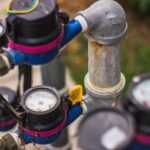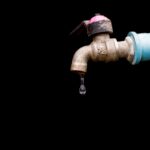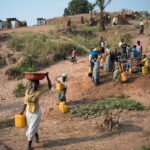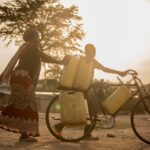The Price of Water – Why Some Communities Can’t Afford Clean Water
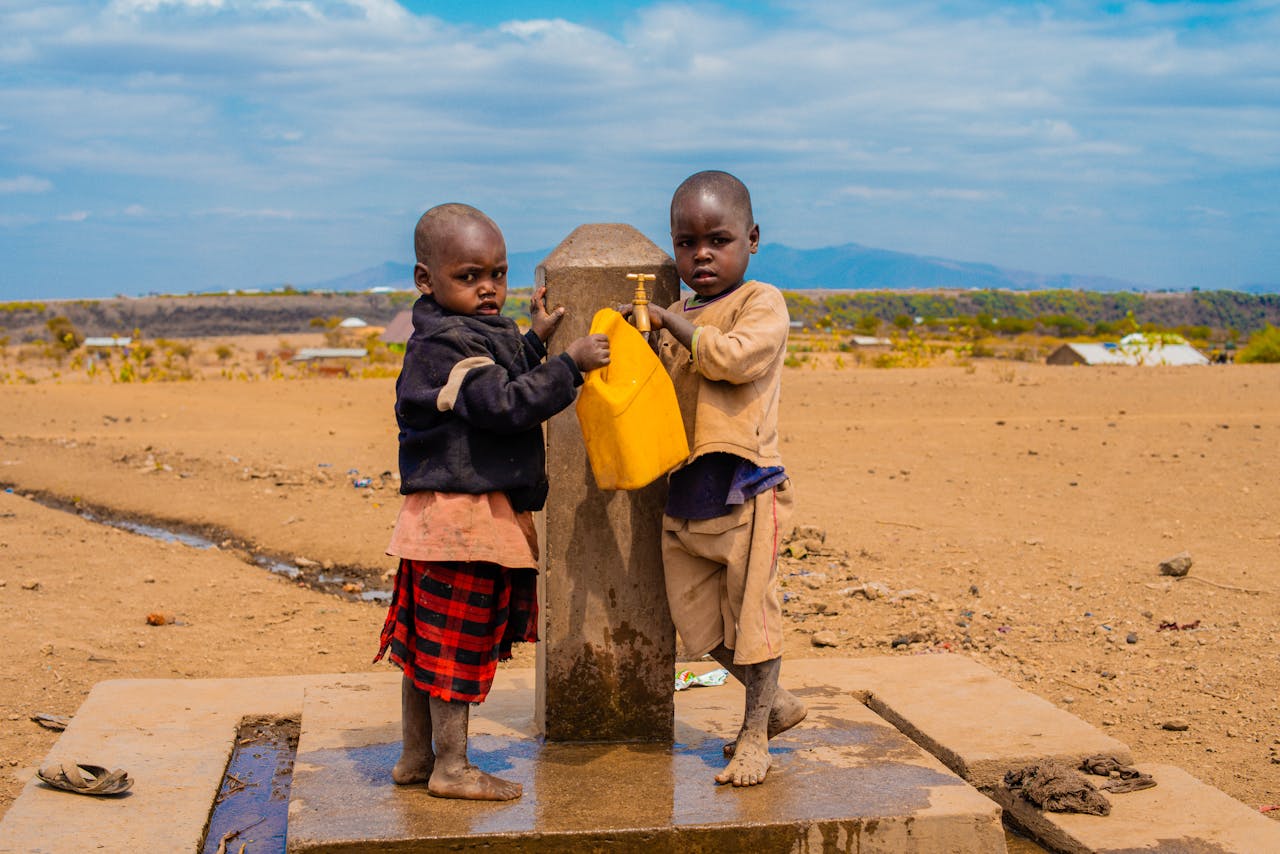
Water stands as humanity’s most basic need, yet millions struggle to afford it. While the United Nations declares water a fundamental human right, the reality differs sharply. Today, over 2 billion people pay high prices for water that others get cheaply through public systems.
In many Nigerian cities, families spend up to 45% of their income on water. Compare this to developed nations where water bills typically consume about 1.1% of household income. Even more striking, those buying from water vendors often pay 10-20 times more than homes with direct connections.
The numbers tell a clear story: clean water remains a luxury for many communities. This price barrier leads to serious consequences – from health issues to economic hardship.
Understanding Water Costs
Several factors determine water costs:
Infrastructure
- Initial setup of water treatment plants
- Pipeline networks for distribution
- Pumping stations and storage facilities
- Regular upgrade requirements
- Power supply systems
Treatment Processes
- Chemical costs for purification
- Laboratory testing expenses
- Staff training and salaries
- Equipment maintenance
- Quality monitoring systems
Distribution
- Pipeline maintenance
- Water pressure management
- Leak detection and repair
- Transportation to remote areas
- Storage facility upkeep
Maintenance Requirements
- Regular system inspections
- Emergency repairs
- Equipment replacement
- Staff costs
- Safety measures
The Urban-Rural Divide
Urban Areas:
- Benefit from established infrastructure
- Lower per-unit water costs
- Regular government monitoring
- Consistent supply systems
- Multiple source options
Rural Challenges:
- Limited infrastructure
- Higher transportation costs
- Fewer treatment facilities
- Irregular supply patterns
- Dependence on single sources
The gap grows wider in remote communities where:
- No public water systems exist
- Private vendors control prices
- Limited storage options
- Poor road networks increase costs
- Seasonal availability affects pricing
Hidden Costs of Water
Beyond the direct price of water, communities face:
Vendor Costs
- Middleman markups
- Transportation fees
- Storage charges
- Delivery services
- Quality uncertainties
Storage Solutions
- Tank purchases
- Construction costs
- Maintenance expenses
- Cleaning requirements
- Replacement needs
Home Purification
- Filter systems
- Boiling fuel costs
- Chemical treatments
- Regular testing
- System maintenance
Health Expenses
- Waterborne illness treatment
- Lost work days
- Medical consultations
- Preventive measures
- Long-term health impacts
Impact on Daily Life
Water costs affect every aspect of community life:
Family Budgets
- Reduced food spending
- Limited savings ability
- Healthcare trade-offs
- Education sacrifices
- Debt accumulation
Time Costs
- Hours spent collecting water
- Queue waiting periods
- Multiple daily trips
- Early morning routines
- Evening water runs
Education Impact
- Children missing school
- Reduced study time
- Poor school sanitation
- Illness-related absences
- Limited school activities
Work Productivity
- Late arrivals at work
- Absence due to collection
- Health-related losses
- Reduced focus
- Family care requirements
Each section shows how water costs create a complex web of challenges. The financial burden extends far beyond the direct price of water, affecting health, education, and economic opportunities. This creates a cycle where communities struggle to break free from water poverty, while prices continue to rise.
These issues particularly affect women and children, who often bear the primary responsibility for water collection and management. The time and energy spent on securing water could otherwise go toward education, work, or community development.
Water Poverty Cycle
The cruel reality of water poverty traps communities in an endless cycle:
Income Impact
- Limited job opportunities due to time spent on water collection
- Higher prices drain family savings
- Reduced ability to invest in business
- Money spent on water instead of income-generating activities
- Inability to afford bulk purchases that could save money
Poor Communities Pay More
- No access to official water connections
- Forced to buy in small quantities at higher rates
- Emergency purchases during shortages
- Lack of bargaining power with vendors
- Unable to invest in long-term solutions
Health Consequences
- Forced to use unsafe water sources
- Frequent waterborne illnesses
- Medical expenses drain resources
- Lost work days affect income
- Children’s growth and development suffer
Economic Ripple Effects
- Businesses struggle with water costs
- Property values decrease in affected areas
- Limited development opportunities
- Reduced community investment
- Declining local economy
Regional Disparities
The gap between regions reveals stark differences:
Developed Nations
- Subsidized water systems
- Modern infrastructure
- Quality monitoring
- Payment flexibility
- Emergency assistance programs
Developing Nations
- Limited government support
- Ageing or absent infrastructure
- Inconsistent quality control
- Strict payment requirements
- Few assistance options
Water Pricing Policies
- Different models across regions
- Political influence on rates
- Varying subsidy levels
- Private sector involvement
- Community management systems
Government Role
- Infrastructure investment
- Quality regulation
- Price controls
- Service oversight
- Emergency response
Climate Change Factors
Climate change worsens water affordability:
Drought Effects
- Reduced water availability
- Higher treatment costs
- Emergency measures
- New source development
- Increased competition
Rising Costs
- More complex treatment needed
- Infrastructure damage repair
- New technology requirements
- Additional storage needs
- Emergency response systems
Infrastructure Challenge
- Damage from extreme weather
- Need for climate-resistant systems
- Higher maintenance costs
- More frequent repairs
- New design requirements
Population Pressure
- Growing demand
- Limited resources
- System strain
- Service interruptions
- Price increases
Current Solutions
Communities and organizations work to address these challenges:
Government Actions
- Infrastructure development
- Subsidy programs
- Price regulations
- Quality monitoring
- Emergency assistance
NGO Initiatives
- Community water projects
- Training programs
- Equipment provision
- Technical support
- Financial assistance
Community Projects
- Local water committees
- Shared maintenance
- Group purchasing
- Resource monitoring
- Emergency funds
Technology Solutions
- Simple filtration systems
- Mobile payment options
- Leak detection tools
- Usage monitoring
- Quality testing
Policy Challenges
Several barriers affect water pricing policies:
Regulation Issues
- Complex oversight needs
- Enforcement difficulties
- Changing standards
- Multiple authorities
- Limited resources
Subsidy Management
- Target population identification
- Fund distribution
- Abuse prevention
- Impact monitoring
- Sustainability concerns
Political Interference
- Election promises affecting rates
- Delayed price adjustments
- Infrastructure neglect
- Misplaced priorities
- Short-term thinking
Corruption Impact
- Inflated project costs
- Diverted resources
- Poor maintenance
- Quality compromises
- Unfair distribution
These sections reveal how water affordability connects to broader social, economic, and environmental issues. The challenge requires addressing immediate needs while building long-term solutions.
In Nigeria, for example, many communities face all these challenges simultaneously. A family in Lagos might pay private vendors high rates for water while nearby neighborhoods have public connections. During the dry season, prices can triple, forcing difficult choices between water, food, and other necessities.
The climate change impact particularly affects agricultural communities, where changing rainfall patterns disrupt traditional water sources. This forces more reliance on expensive alternatives, draining resources from already struggling families.
These challenges need both immediate action and long-term planning. While governments and organizations work on large-scale solutions, communities often develop their own coping strategies, from shared water collection to community payment plans.
Economic Models
Different approaches to water pricing affect affordability:
Pricing Structures
- Block tariffs (higher use costs more)
- Flat rates regardless of usage
- Pay-as-you-fetch systems
- Monthly subscription models
- Emergency pricing during shortages
Cross-subsidization
- Wealthy areas supporting poor communities
- Business rates covering residential costs
- Urban centers supporting rural areas
- Higher charges for luxury use
- Special rates for essential services
Public-Private Models
- Government oversight with private operation
- Shared investment responsibilities
- Performance-based contracts
- Risk-sharing arrangements
- Community participation requirements
Community Ownership
- Local water committees
- Shared maintenance costs
- Group decision-making
- Transparent pricing
- Fair distribution systems
Social Justice Aspect
Water access reflects broader social issues:
Human Rights
- Water as a basic necessity
- Minimum quantity needs
- Quality standards
- Accessibility requirements
- Affordability guidelines
Gender Impact
- Women’s time burden
- Girls missing school
- Safety concerns
- Health effects
- Economic limitations
Environmental Justice
- Poor areas near polluted sources
- Limited treatment options
- Exposure to contamination
- Resource competition
- Climate change effects
Health Equity
- Access to safe water
- Disease prevention
- Medical costs
- Work capability
- Child development
Future Considerations
Looking ahead at growing challenges:
Population Growth
- Increased demand
- System pressure
- Resource competition
- Infrastructure needs
- Price implications
Infrastructure Requirements
- System expansion
- Technology updates
- Climate adaptation
- Maintenance needs
- Emergency preparedness
Technology Costs
- New treatment methods
- Digital monitoring
- Payment systems
- Quality control
- Distribution management
Climate Adaptation
- Source protection
- System resilience
- Alternative supplies
- Energy efficiency
- Emergency storage
These issues particularly affect African communities. Take Nigeria’s growing cities – Lagos adds thousands of new residents monthly, straining already limited water systems. Rural areas face even bigger challenges as young people move to cities, leaving fewer people to maintain community water systems.
The technology gap also matters. While some areas use digital payment systems and automated monitoring, many communities still rely on manual systems and cash payments. This creates opportunities for overcharging and makes tracking usage difficult.
In farming communities, changing weather patterns force expensive adaptations. Traditional water sources like streams and shallow wells become unreliable, requiring deeper boreholes or long-distance water transportation.
The future demands balance between immediate needs and long-term planning. Communities need affordable water today while building systems that will serve growing populations tomorrow. This requires careful planning, fair pricing, and strong community involvement.
Success stories exist – like community-managed systems where transparent pricing and shared responsibility keep water affordable. Or public-private partnerships that combine government oversight with efficient private sector management. These models show how good planning and fair policies can make clean water accessible to all.
Recommendations
Meaningful change requires action at multiple levels:
Policy Changes
- Water pricing regulations that protect poor communities
- Mandatory service to all areas regardless of income
- Clear quality standards and monitoring
- Support for community-managed systems
- Emergency assistance programs for water bills
Funding Solutions
- Government budget allocation for water infrastructure
- Special taxes on luxury water use
- International developmental support
- Community saving schemes
- Flexible payment options for connections
Community Involvement
- Local water management committees
- Shared maintenance responsibilities
- Group purchasing arrangements
- Skills training for system maintenance
- Emergency response planning
International Cooperation
- Technology sharing between nations
- Joint river basin management
- Shared research programs
- Training exchanges
- Emergency assistance networks
Call to Action
Making clean water affordable requires everyone’s involvement:
Individual Role
- Responsible water use
- Supporting community projects
- Reporting problems quickly
- Paying water bills promptly
- Learning water management skills
Community Support
- Forming water user associations
- Sharing resources and knowledge
- Protecting water sources
- Supporting vulnerable members
- Building emergency reserves
Policy Advocacy
- Demanding fair water pricing
- Supporting water-friendly laws
- Monitoring service delivery
- Reporting corruption
- Participating in planning
Global Responsibility
- Supporting proven organizations like AquaMaya that create lasting change in West African communities
- Sharing success stories
- Building partnerships
- Environmental protection
- Climate change action
These final sections emphasize practical steps for change. For example, in many Nigerian communities, success comes when local leaders work with government agencies and organizations like AquaMaya that understand local challenges. A village might start with a community water committee, then partner with such organizations for technical support, while advocating for government infrastructure investment.
The key lies in balancing immediate needs with long-term solutions. While water vendors might solve today’s needs, communities must push for permanent infrastructure. Similarly, while individual households can save for connections, governments must make these connections affordable.
Real change happens when communities unite.
The global water crisis needs both local action and international support. Communities in Africa can learn from others facing similar challenges. Success in one area can guide solutions elsewhere. Most importantly, affordable clean water requires sustained effort from everyone – individuals, communities, governments, and international partners.
The time for action is now. Every day without affordable clean water costs lives and limits opportunities. While the challenge is complex, solutions exist. The question isn’t whether we can make clean water affordable for all communities, but whether we have the will to make it happen.
Sources:
- https://www.rural21.com/english/publications/detail/article/the-high-cost-of-cheap-water.html
- https://www.environewsnigeria.com/how-the-worlds-poorest-toil-to-pay-for-water-by-wateraid/
- https://www.sciencedirect.com/science/article/abs/pii/S0957178715301119
- https://scholarlypublications.universiteitleiden.nl/access/item%3A2871127/download
- https://thesun.ng/report-over-10m-lagos-residents-lack-access-to-potable-water-despite-n16bn-allocation-in-5-years/
- https://www.mdpi.com/2073-4441/13/19/2755
- https://iwaponline.com/h2open/article/5/1/115/87255/Factors-constraining-household-willingness-to-pay



